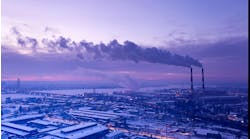[pullquote]In March, Emissions Reduction Alberta (ERA), Edmonton, Alberta, announced the winners of the second round of the ERA Grand Challenge: Innovative Carbon Uses. The four projects selected each will receive up to C$3 million (≈$2.25 million) over the next two years to spur development of their technology.
The Grand Challenge focuses on technologies that promise to significantly reduce greenhouse gas (GHG) emissions by productively using carbon dioxide. The 24 first-round winners announced in 2014 got C$500,000 (≈$325,000) in funding (“Carbon Competition Names First Round Winners.”)
The second round was open to all comers worldwide. Nineteen round-one winners entered along with 69 new applicants. The projects chosen include three from round one as well as one new entry:
[callToAction ]
• A process to use CO2 and saline wastewater to produce re-usable water and oil-field chemicals. Aimed for use on-site at oil and gas operations, the technology is being developed by Mangrove Water Technologies, Vancouver, B.C., a spinoff from the chemical engineering department at the University of British Columbia. The method relies on a reactor that uses electricity to desalinate wastewater while also producing chemicals such as carbonate salts and hydrochloric acid. It promises to cut operational costs as well as water consumption, wastewater generation and carbon footprint. Round two funding will support a field pilot at a site in Alberta.
• A route to make high quality fuels and feedstocks from CO2, and wastewater using sunlight. The process from McGill University, Montreal, and Lumenfab Nanotechnologies, Montreal, produces materials such as methanol that can serve as fuels or “green” feedstocks for making petrochemicals. It gets energy from low-cost silicon-wafer solar cells. Funding will enable building a high-efficiency scalable system and field-testing it in Alberta.
• A sustainable method for producing cement while using CO2,. The process from Solidia Technologies, Piscataway, N.J., reduces the carbon footprint of cement and concrete by as much as 70%. It results in lower GHG emissions during cement production and then permanently sequesters CO2, emissions during curing. The method also cuts water consumption during manufacturing by 60–80%. In addition, the concrete boasts better workability and durability than traditional concrete and cures much faster.
• A technique to inject CO2,into concrete to sequester the carbon and improve the concrete’s performance. This new entrant — from CarbonCure Technologies, Dartmouth, Nova Scotia — is designed for retrofitting onto existing concrete plants. It not only sequesters the CO2, but also makes the concrete stronger and less expensive. The technology already is being deployed commercially; the Grand Challenge funding will go toward maximizing overall GHG benefits and improving the economics so it suits smaller concrete plants.
More details on these technologies can be found here.
The Grand Challenge will wrap up in 2019. At that time, one round-two project may receive up to an additional C$10 million (≈$7.5 million) to help commercialize the technology in Alberta.
ERA (originally called the Climate Change and Emissions Management Corp.) receives funding from the government of Alberta. This money comes from a fund that large emitters in the province pay into as a compliance option if they can’t meet emissions reduction targets.
The Grand Challenge is a grand idea that merits emulating.


